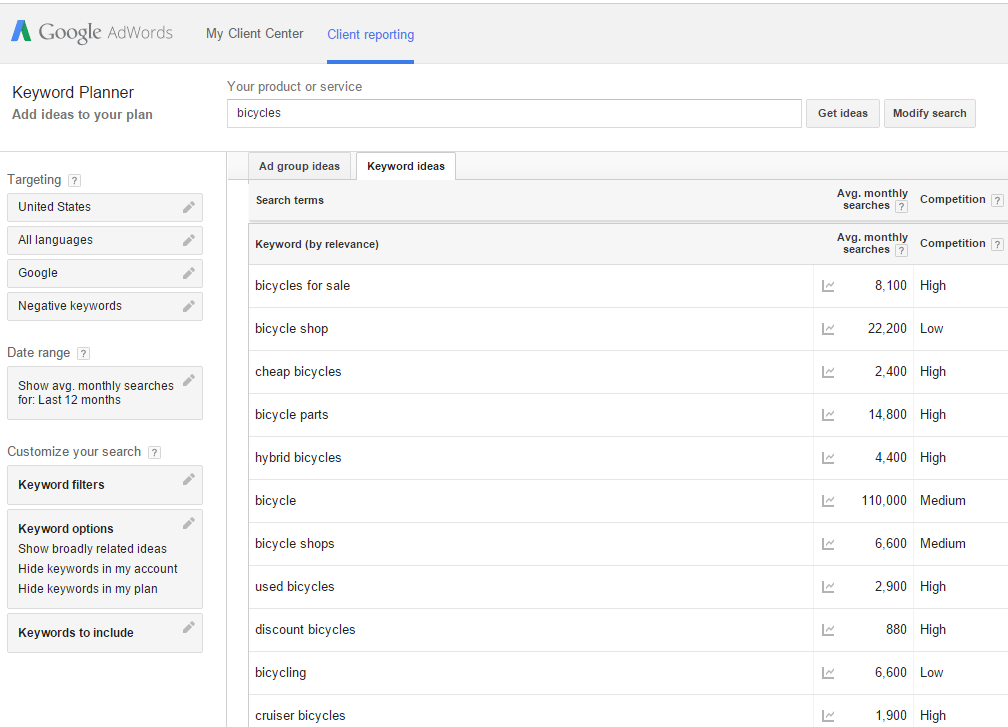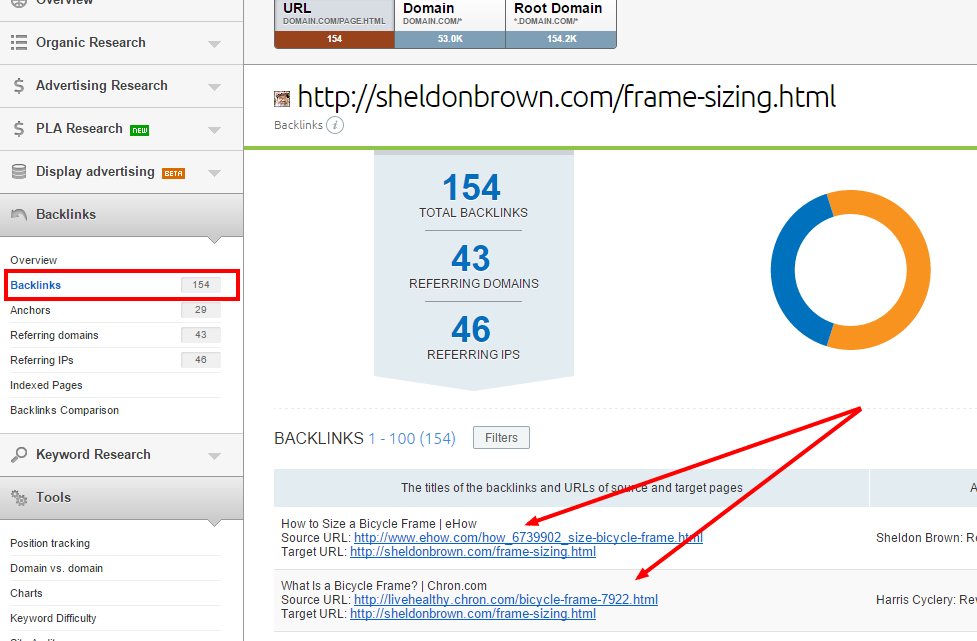Keyword Strategy: Then vs. Now
Let's take a look at the differences between keyword strategy then (more than five years ago) and keyword strategy now.
Let's take a look at the differences between keyword strategy then (more than five years ago) and keyword strategy now.
I caught myself in thought the other day thinking about the SEO of yesterday (more than five years ago) and how much tactics and strategy have changed over the years. Most would agree that SEO strategy isn’t quite as easy as it used to be. Specifically, keyword strategy has changed quite a bit. In this, we don’t plaster a site with keywords as much as we define the relevancy of high search volume terms, the content type that we have to create to captivate our audience, and finally how and who we will market that topic to. Pondering all of this, I thought it was a great change to compare keyword strategy within these two points in time and allow me to shed some ideas on how you can get in the “now” with your keyword strategy.
I may have a few more gray hairs vs. my entry into the SEO world. Granted, nine years is not that long of a time, but it seems like it has been a lifetime of change in SEO strategy. SEO campaigns today have one main thing in common with the old days: keyword research. That is one thing that will never change. We have to create a baseline where we identify the keywords which are both relevant to our website but also have favorable search volume. If anything has changed within the mindset here, personally, I think it has been a move away from targeted a bunch of individual terms vs. targeting overarching subjects in today’s age. One aspect of keyword strategy that I think has definitely changed is the execution beyond the keyword research phase. Once I had my keywords back in the day, the next step was to assign them to a relevant page via placement in page Title elements, H1/H2 headings, copy, internal links, ALT tags, etc. I really felt like that was the brunt of implementing targeted keyword tactics. While generating links to these respective pages was important back then, it was in no way comparable to the importance that it has today. While keyword strategy has changed quite a bit, it was easier back then, but I think today it is much more interesting and crafted around true marketing. Where we were obsessed with on-page integration, we have moved on to how we create buzz and social propellants to create awareness for keyword-relevant content which leads to traffic and links.
As I mentioned, we must begin with finding what terms are applicable to our website/organization. I still use tools like Google AdWords Keyword Planner.  This has always, in my opinion, been the godfather of keyword research tools. It is always a first starting point in keyword research. From there, I move through other supporting keyword research tools such as Ubersuggest to gain an understanding of what people have been searching for surrounding keyword topics.
This has always, in my opinion, been the godfather of keyword research tools. It is always a first starting point in keyword research. From there, I move through other supporting keyword research tools such as Ubersuggest to gain an understanding of what people have been searching for surrounding keyword topics.  Now, we move away from the old mindset of “we need to go place these keywords on relevant pages of our site.” The continuation of tool usage will be critical, as it will allow you to glean quite a bit of insight. The next step will be reviewing the targeted keyword in SEMrush to understand who ranks for the term/topic. Yeah, we could look at this straight from search results, but our next step is in this tool anyway.
Now, we move away from the old mindset of “we need to go place these keywords on relevant pages of our site.” The continuation of tool usage will be critical, as it will allow you to glean quite a bit of insight. The next step will be reviewing the targeted keyword in SEMrush to understand who ranks for the term/topic. Yeah, we could look at this straight from search results, but our next step is in this tool anyway.  Next, we will go in two directions. First, I click through the ranking URL and can find all other terms related to this topic that this page ranks for. Take note of what is on this page, especially the type of content that is used. Second, I can click through on the domain links and create an export of all rankings that this ranking domain has. If they are ranking for this term they are likely a content authority on the subject and I am interested to see what all the other types of content and keywords they rank for. We are now gleaning insight on similar keywords topics, concepts, and types of content that will help us to lift our organic ranking visibility.
Next, we will go in two directions. First, I click through the ranking URL and can find all other terms related to this topic that this page ranks for. Take note of what is on this page, especially the type of content that is used. Second, I can click through on the domain links and create an export of all rankings that this ranking domain has. If they are ranking for this term they are likely a content authority on the subject and I am interested to see what all the other types of content and keywords they rank for. We are now gleaning insight on similar keywords topics, concepts, and types of content that will help us to lift our organic ranking visibility.  Before I leave this tool I would also like to review the Backlinks section to understand the link authority of this page. What are the types of sites that link to this page? Could you provide a fresh update of content that this site would like to link to? Can you re-create this keyword topic via another medium, video, etc. and gain a link here, too?
Before I leave this tool I would also like to review the Backlinks section to understand the link authority of this page. What are the types of sites that link to this page? Could you provide a fresh update of content that this site would like to link to? Can you re-create this keyword topic via another medium, video, etc. and gain a link here, too?  Up to this point we have gained the needed insight on what terms we think might be valuable to our SEO campaign. We also have taken a look at the competitive landscape of search results and how those who reside there may have attained this presence. We are also learning how we may mimic these keyword and content tactics to even the playing field. We can’t stop there, though. What has really set today’s marketing apart from the past is creating content propellants that help to get these keyword topics some buzz and inbound links. My next stop is Buzz Sumo. Here, I will enter my desired keyword into the search box and will be given an output of what content pertaining to that keyword has been performing well in regard to engagement in LinkedIn, Facebook, Twitter, Pinterest, and Google+.
Up to this point we have gained the needed insight on what terms we think might be valuable to our SEO campaign. We also have taken a look at the competitive landscape of search results and how those who reside there may have attained this presence. We are also learning how we may mimic these keyword and content tactics to even the playing field. We can’t stop there, though. What has really set today’s marketing apart from the past is creating content propellants that help to get these keyword topics some buzz and inbound links. My next stop is Buzz Sumo. Here, I will enter my desired keyword into the search box and will be given an output of what content pertaining to that keyword has been performing well in regard to engagement in LinkedIn, Facebook, Twitter, Pinterest, and Google+.  I want to pay close attention to a few things. I am not trying to find competitors here as there may be news outlets and totally irrelevant sites from a competitive standpoint. However, they are finding ways and topics to gain buzz and engagement for the keyword I want to rank for. The second thing I want to look at is content types. Is it a product page that gains attention or is it a blog post, news piece, webinar, video, infographic, etc. Third, what social channels are working well for this keyword topic as well as what content types work the best with what social channels? We have our terms, competitor insight, sites that link to this keyword topic, and winning content types. Now, let’s go find those people that will likely latch onto these keywords and help promote this keyword content we are getting ready to create. You can use a few different tools out there but I prefer Followerwonk to find authoritative Twitter profiles that have a relation to my keyword topics. These are the people I want to follow and begin to develop a relationship with before I can massage by keyword targeted content in their direction. As I said, there are other tools out there to review in this manner such as Twtrland and they serve a similar function. We just want to make sure we are identifying influencers and popular users that can relate to our keyword topic. It also doesn’t hurt if their follower retweet ration is favorable as well.
I want to pay close attention to a few things. I am not trying to find competitors here as there may be news outlets and totally irrelevant sites from a competitive standpoint. However, they are finding ways and topics to gain buzz and engagement for the keyword I want to rank for. The second thing I want to look at is content types. Is it a product page that gains attention or is it a blog post, news piece, webinar, video, infographic, etc. Third, what social channels are working well for this keyword topic as well as what content types work the best with what social channels? We have our terms, competitor insight, sites that link to this keyword topic, and winning content types. Now, let’s go find those people that will likely latch onto these keywords and help promote this keyword content we are getting ready to create. You can use a few different tools out there but I prefer Followerwonk to find authoritative Twitter profiles that have a relation to my keyword topics. These are the people I want to follow and begin to develop a relationship with before I can massage by keyword targeted content in their direction. As I said, there are other tools out there to review in this manner such as Twtrland and they serve a similar function. We just want to make sure we are identifying influencers and popular users that can relate to our keyword topic. It also doesn’t hurt if their follower retweet ration is favorable as well. 
See, I told you I thought it was much harder to develop and flush your keyword strategy out. While it is a much more in-depth process, it is quite interesting and instead of solely chasing an algorithm, you can take a keyword and understand the type of content which performs well, the sites that like to link to this content, as well as the audience that will likely accept the keyword targeted message.